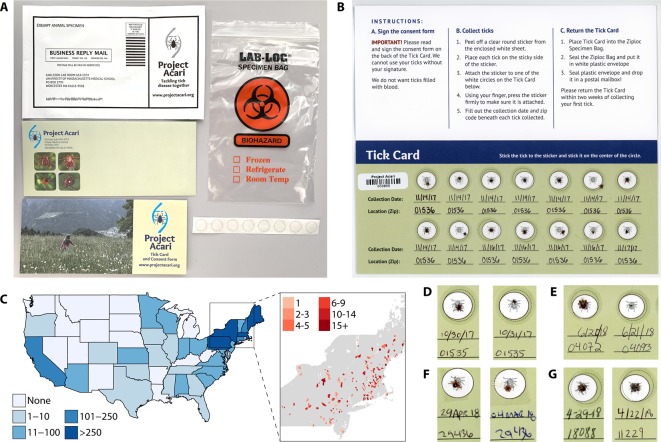Figure 1.
Citizen science approach enables large-scale collection of many tick species from a broad geographic area. (A) Our custom-designed “Tick Kit” includes a Tick Card, clear stickers to adhere ticks to the Tick Card, as well as a sealable biohazard bag and prepaid plastic envelope for return shipping. All components fit into standard first-class mail envelopes for fast and inexpensive shipping in both directions. (B) A returned Tick Card with 14 ticks, the maximum capacity of the Tick Card, each sealed on the card with a clear sticker and labelled by the volunteer with collection data and location (zip code). Each Tick Card has a unique barcode and instructions are printed on the card adjacent to the tick collection section. (C) Over 900 people volunteered for Project Acari during two recruitment windows (October and November of both 2017 and 2018); we received 322 Tick Cards with 2,417 ticks from 32 states. Most (2,027 ticks) came from states in the northeast (inset), the geographic region with the highest rates of TBD in the United States. (D) Visual inspection of a subset of tick cards suggested that, while most of the ticks collected were adult female (left) or male (right) Ixodes scapularis, we also received (E) diverse life stages, including adults (left) and nymphs (right) as well as other species, including (F) female and male Amblyomma americanum (lone star tick) and (G) female and male Dermacentor variabilis (American dog tick).

